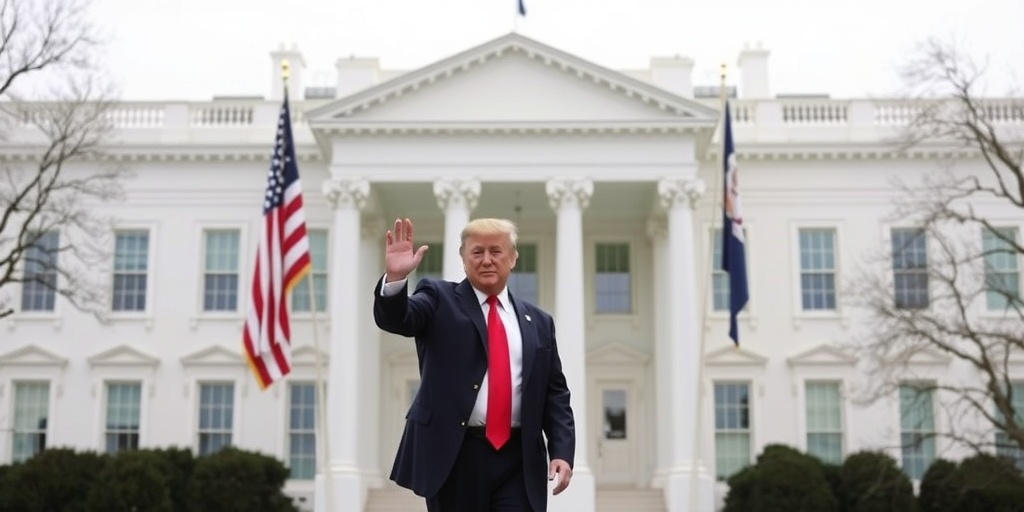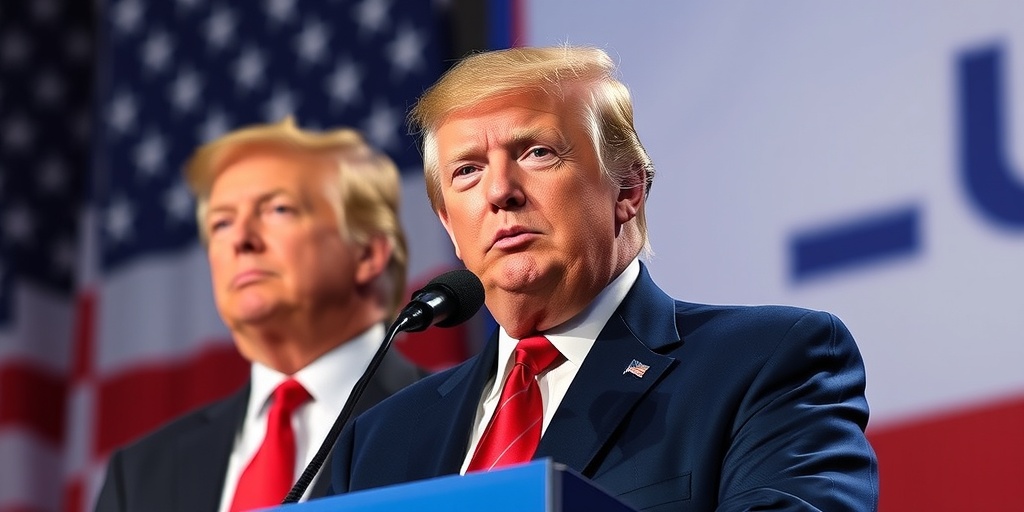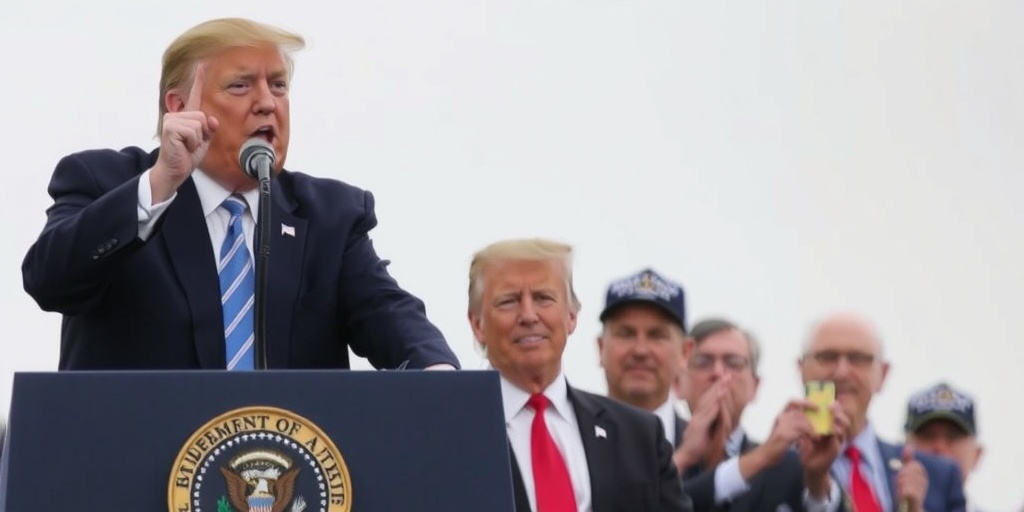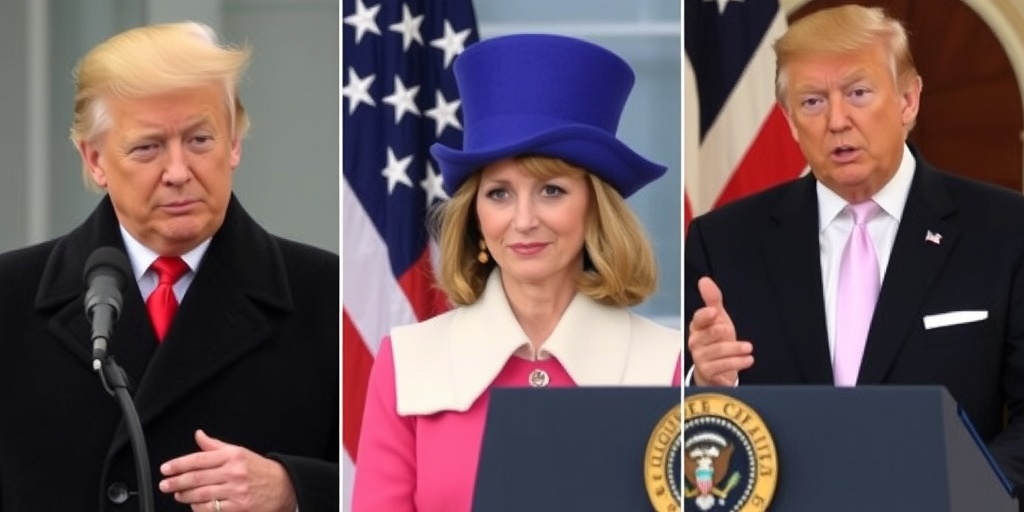Now Reading: Trump’s Surprising Comeback
-
01
Trump’s Surprising Comeback
Trump’s Surprising Comeback

Donald Trump’s Resurgence: A Stronger Bid for the White House
In the ever-evolving landscape of American politics, Donald J. Trump is orchestrating a stunning return to the White House, bolstered by a significantly weakened opposition and a more malleable Congress. As the 2024 election approaches, political observers have noted a marked shift in the dynamics surrounding Trump, particularly in how he has managed to consolidate his influence over the Republican Party and its voters since his defeat in the 2020 presidential election.
Jonathan Swan, a respected politics reporter for The New York Times, has closely monitored Trump’s journey over the past four years. His analysis sheds light on the former president’s strategies and the evolving support he has garnered among party loyalists. The political landscape, once dotted with critics within his own party, now appears increasingly unified behind Trump as he prepares for a potential rematch against President Joe Biden.
Trump’s path back to political prominence has not been without significant obstacles. Following the 2020 election, he faced numerous challenges, including a largely unfavorable media environment, ongoing legal troubles, and a perceived rift between traditional Republicans and his populist base. However, instead of retreating, Trump has adapted, focusing his efforts on rallying support and reinforcing his position as the de facto leader of the Republican Party.
One of the key factors in Trump’s resurgence is the changing demographics and priorities of the Republican electorate. As the party increasingly embraces Trump’s brand of populism, many Republicans have begun to align themselves more closely with his positions, even as other factions of the party advocate for a return to more traditional conservative values. This internal shift has effectively fortified Trump’s base, which remains energized and mobilized for the upcoming election cycle.
Moreover, Trump’s ability to galvanize support among voters has been remarkable. His rallies, which draw thousands of enthusiastic supporters, have become a hallmark of his campaign strategy. This grassroots engagement has served not only to remind voters of his past successes in office but also to reinforce the narrative that he is still the champion of their interests, particularly as economic concerns and cultural issues dominate the public discourse.
In addition to solidifying his base, Trump has strategically positioned himself as a key player in the Republican primaries. Many of his potential rivals are wary of challenging him directly, aware that they risk alienating a substantial portion of the electorate that remains loyal to Trump. Consequently, this has led to a somewhat muted Republican primary field, with several GOP figures opting to sit back and gauge their chances rather than mount a full-fledged challenge.
Another significant aspect of Trump’s political comeback is the altered landscape within Congress. The Republican Party’s control of the House of Representatives has allowed Trump to seek endorsements and support from key legislators, further embedding his influence in the party’s leadership. This newfound collaboration underscores a shift toward a more compliant Congress, one that is increasingly willing to align with Trump’s agendas and remain loyal to his vision for the party.
Furthermore, as critics of Trump attempt to mount frontrunning campaigns, they find themselves navigating a landscape where the former president’s grip on the party remains steadfast. Voter sentiment has shifted, with many party members viewing Trump as the best equipped to address pressing national issues, including inflation, immigration, and foreign policy concerns. This evolving perception reinforces his standing as a prominent figure within the Republican Party.
Trump’s legal troubles, which once threatened to undermine his political ambitions, have also transformed into a focal point for his narrative. He has expertly reframed these challenges as attacks against him and his supporters, portraying himself as a victim of a politicized justice system. This messaging has resonated with many voters who feel disenfranchised by the political establishment, further galvanizing support for his campaign.
As the political scene continues to unfold ahead of the 2024 election, it is clear that Donald Trump is not merely a candidate navigating the waters of a primary. He is a dominant force, reinvigorated and ready to leverage the weaknesses of his opposition to advance his agenda. Whether he can maintain this momentum and ultimately reclaim the presidency is a question that will captivate the nation in the months to come.
In the grand tapestry of American politics, Trump’s return to the White House appears poised to be marked by a much stronger position, both within his party and among the electorate who once again see him as the standard-bearer for their values and aspirations. As Swan’s analysis highlights, this resurgence reflects not only Trump’s adaptability but also the significant shifts occurring within the Republican Party and its relationship with its constituents.
Stay Informed With the Latest & Most Important News
Previous Post
Next Post
-
 01New technology breakthrough has everyone talking right now
01New technology breakthrough has everyone talking right now -
 02Unbelievable life hack everyone needs to try today
02Unbelievable life hack everyone needs to try today -
 03Fascinating discovery found buried deep beneath the ocean
03Fascinating discovery found buried deep beneath the ocean -
 04Man invents genius device that solves everyday problems
04Man invents genius device that solves everyday problems -
 05Shocking discovery that changes what we know forever
05Shocking discovery that changes what we know forever -
 06Internet goes wild over celebrity’s unexpected fashion choice
06Internet goes wild over celebrity’s unexpected fashion choice -
 07Rare animal sighting stuns scientists and wildlife lovers
07Rare animal sighting stuns scientists and wildlife lovers





















